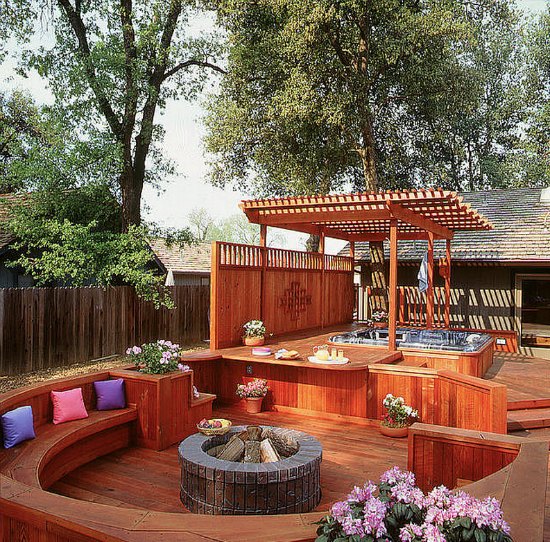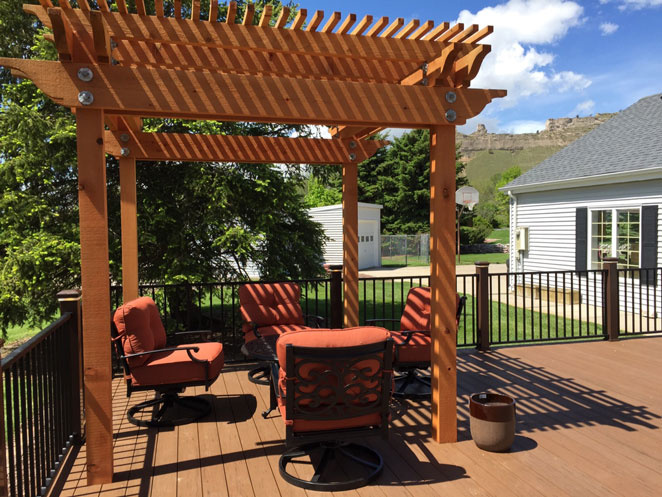Of the many landscaping trends that come and go, one of the more enduring structures has to be the pergola. With its open sides and slatted roofs that offer shade without blocking the sun, redwood pergolas serve as gateways to formal gardens, freestanding structures in a yard, surrounding a hot tub, or attached to a house over the deck.

Not only timeless, redwood pergolas are elegant in their simple structure: this is a weekend project for an adequately skilled DIYer. Some considerations for planning your redwood pergola:
- Before beginning any home improvement project, check with your local building department to learn if a permit is required and to discover any special building codes for your locality.
- Design to your space. Some redwood companies offer design tools that make this very easy to do. You can also modify existing plans to fit your space needs.
- Use only non-corrosive hardware to prevent staining on your finished redwood pergola.
- Be sure to finish your redwood pergola with a clear water repellent or stain to enhance your structure’s natural beauty and to extend the life of your project.
What makes a redwood pergola eco-friendly? Redwood is grown and harvested from responsibly managed commercial forests that are all FSC certified. Redwood is also proven carbon-negative, as the trees absorb and store carbon in their wood fibers – and stays there after harvesting. The lumber is naturally strong and durable, shrinks and swells less than other woods, and is less likely to warp or split. Redwood is also recyclable and biodegradable. As more California homeowners consider drought conditions when planning their landscaping projects, it’s also good to know that redwood is naturally fire-resistant.
A Redwood pergola is a great way to enjoy outdoor living, and with many easy-to-build designs, can make a stunning addition to any home.
View the original article written by Charlie Jourdain here.
